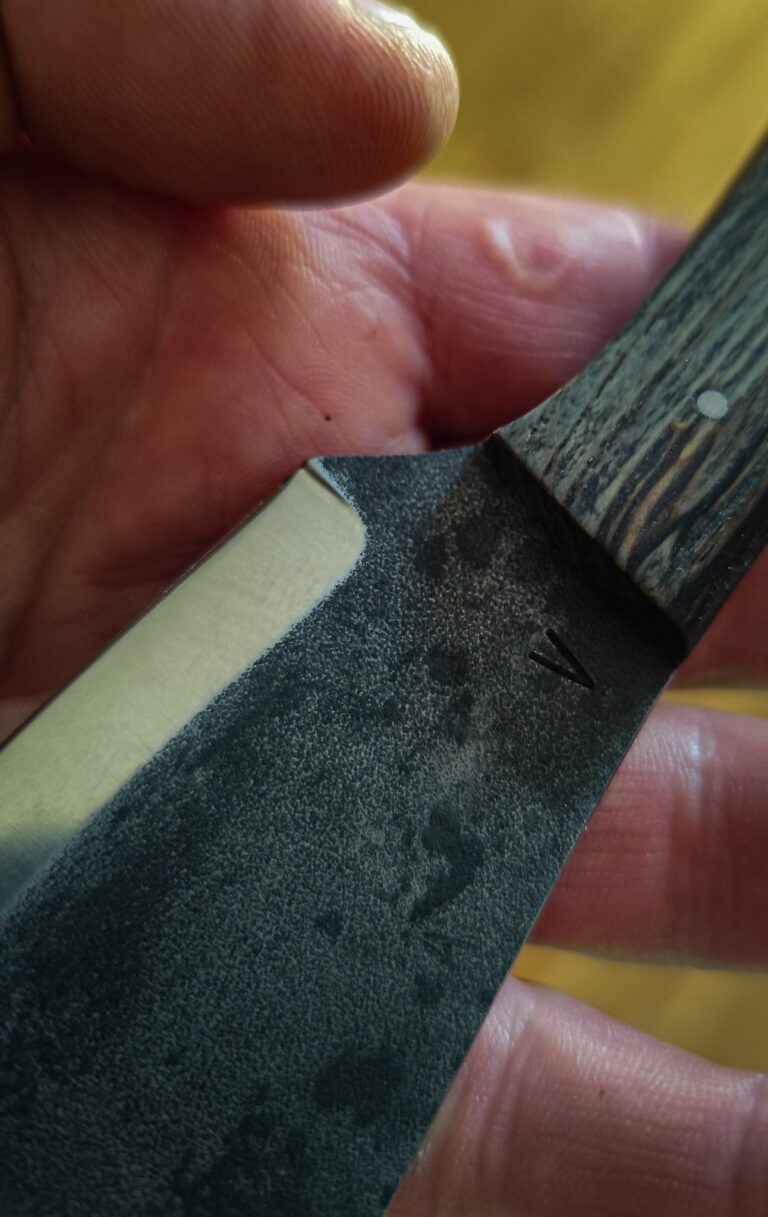
ApexUltra Steel
ApexUltra is a high-performance carbon steel developed specifically for demanding knife makers and enthusiasts. Engineered with a precise balance of toughness, edge retention, and fine grain structure, this steel offers exceptional cutting performance and durability. Its high hardness potential makes it capable of achieving razor-sharp edges, while still maintaining excellent stability under heavy use.
Unlike many traditional carbon steels, ApexUltra is designed to push the limits of edge holding without sacrificing resilience. It responds well to proper heat treatment, resulting in a strong, fine-grained blade with outstanding wear resistance.
ApexUltra is the steel of choice for those seeking maximum performance in custom knives – a modern evolution of carbon steel crafted for professionals and collectors alike.
What is ApexUltra?
ApexUltra is a steel developed by Tobias Hangler, and Marco Guldimann. It is designed for forging bladesmiths that want a steel with enhanced performance compared with the old standard simple alloys like 1084 and 1095. The steel uses a combination of Cr, W, and V for high edge retention, hardness, and toughness.
![]()
Edge Retention
One of the major benefits of ApexUltra vs other low alloy steels for forging bladesmiths is the increased wear resistance and the improved edge retention that that provides. The chromium addition increases the hardness of the cementite (iron carbide) and the tungsten and vanadium form hard carbides, all of which increases wear resistance. This can be seen in the CATRA edge retention tests below on ApexUltra. There is significantly higher wear resistance than other low alloy knife steels, even when compared with 1.2562 and Blue Super, which also have high tungsten additions.
How is it possible to develop a new steel today?
Actually, there has been little research on new carbon steels for fine cutting knives as this is a not a field that the tool steel industry is interested in. The focus of the knife steel development has been in the stainless sector with optimizing slicing edge retention rather then fine edges for push cutting. Consequently, there are many ideas left explored in the area of steels that are well suited for bladesmiths to forge into fine cutting knives.
Is ApexUltra easy to sharpen?
Despite the high hardness, it is rather easy to sharpen and does not require special diamond sharpening tools. Whetstones and leather strops are effective for knife care, and with the fine microstructure very keen edges can be achieved. A honing rod is only recommended for the lower hardness levels and should always be used with care not to damage the edge. Experienced sharpeners have, however, successfully used very fine honing rods up to high hardnesses as well
How is ApexUltra better than other steels?
Hardness and toughness are typically a balance where you sacrifice the one to gain the other. There are only few factors which benefit both – Purity and homogeneity as well as a fine grain and fine carbides are what we strive for in the perfect steel for knife applications.
Purity
Most steels contain some inclusions which do not benefit the steel but represents small defects, where cracks and corrosion can begin their attack on the steel. If there are fewer points to easily start a crack, the overall toughness of the material increases. Why aren’t all steels super pure? It requires additional steps in production which costs money, and the cheaper quality suffices for many general applications. Not everybody spends hours of work on a few hundred grams of steel to make a tool that is designed to end in an infinitely thin edge.
Homogeneity
As with purity, homogeneity is important to make the entire material consistent – this ensures that there are no soft or brittle spots in the material so that the overall blade is durable.
A fine grain
A fine grain increases hardness as well as toughness at the same time. A proper heat treatment protocol will ensure that you get the most out of the steel but the steel design itself can also help: The presence of small carbides at forging and heat treating temperatures ensures that there is no drastic grain growth during processing so that a fine grain structure is easier to achieve.
Fine carbides
The volume fraction and hardness of carbides control edge retention in CATRA and rope cutting endurance tests. The size of the largest carbide correlates with the toughness of a material, so fine and hard carbides will usually get the most edge retention for a given toughness. Existing low alloy, high hardness steels contain either larger primary carbides and/or plate martensite – both decrease toughness drastically. ApexUltra is designed to avoid these problems, and the successful structure can be seen in the micrographs as well as the hardness / toughness ratio diagrams.